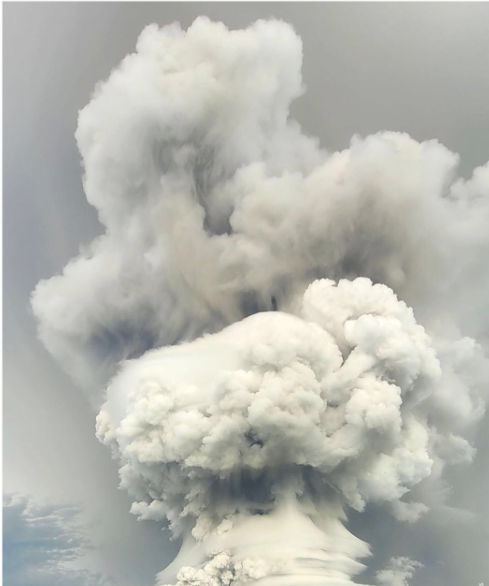New scientific findings have revealed that the eruption of the Hunga Tonga-Hunga Ha’apai volcano on January 15, 2022, resulted in the highest recorded rates of lightning flashes on Earth. This extraordinary volcanic event surpassed any previous storm in terms of lightning activity, according to recent research.
The eruption of Hunga Volcano, characterized as a phreatoplinian eruption, was a significant event comparable in scale to the eruption of Krakatau in 1883. While this eruption style had previously only been observed through geological records, modern instrumentation allowed for its direct observation for the first time. The powerful eruption generated immense ash plumes that generated substantial amounts of static electricity, a consequence of the movement and collisions between ash particles. The volcanic activity even created its own weather systems, enabling lightning to occur at altitudes higher than those typically associated with thunderstorms.
The volcanic plume produced by the undersea eruption in Tonga reached extraordinary heights, surpassing typical thunderstorms by more than 25 miles. Lightning was observed at stratospheric altitudes, ranging from 12 to 18 miles, where the atmospheric pressure is usually insufficient to support lightning associated with regular thunderstorms. The rapid ascent of the volcanic plume likely created localized increases in air pressure, facilitating the conditions necessary for lightning formation. As the plume expanded outward, assuming the shape of an umbrella cloud, it generated fast-moving circular ripples called gravity waves, reminiscent of the patterns created when a rock is dropped into a pond. Lightning rings, resembling donut shapes, expanded alongside the umbrella cloud, reaching diameters as large as 174 miles. While similar “lightning holes” have been observed in thunderstorms, they have never been witnessed on such a grand scale.
Space-based optical sensors and global networks of ground-based radio antennas detected the unprecedented lightning activity. The research team, led by the U.S. Geological Survey Cascades Volcano Observatory, discovered that the eruption produced an astonishing peak rate of 2,615 flashes per minute, lasting for nearly five minutes. This peak lightning rate significantly exceeded the second most intense lightning event ever recorded, which occurred during a thunderstorm in the southern United States in the summer of 1996 and had a rate of 993 flashes per minute. In total, over 200,000 lightning flashes occurred during the one-hour-long eruption, which ultimately led to the volcano’s collapse into the sea.
These findings provide remarkable insights into the unique and powerful natural phenomena associated with volcanic eruptions, furthering our understanding of the Earth’s dynamic processes and their impact on atmospheric electricity.





